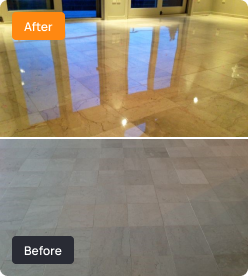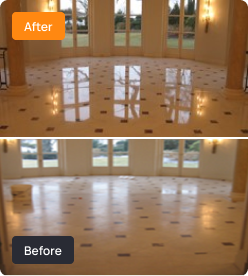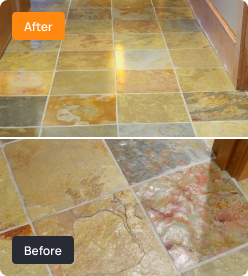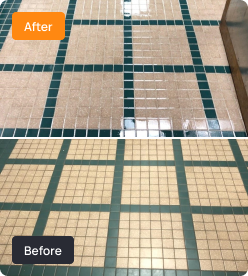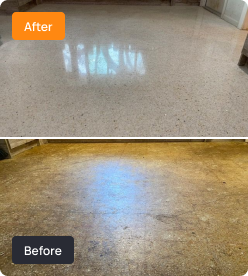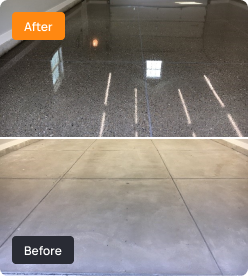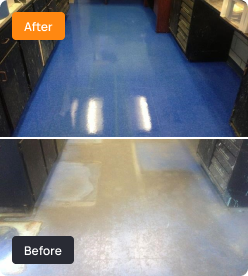Sealing Your New Ceramic Tile
To determine if your ceramic tile needs to be sealed, you will need to determine how absorbent the tile is. Most ceramic tile is nonabsorbent and will not need to be sealed. As with any rule there are however a few exceptions, that do need to be sealed. As technology improves more examples of ceramic […]

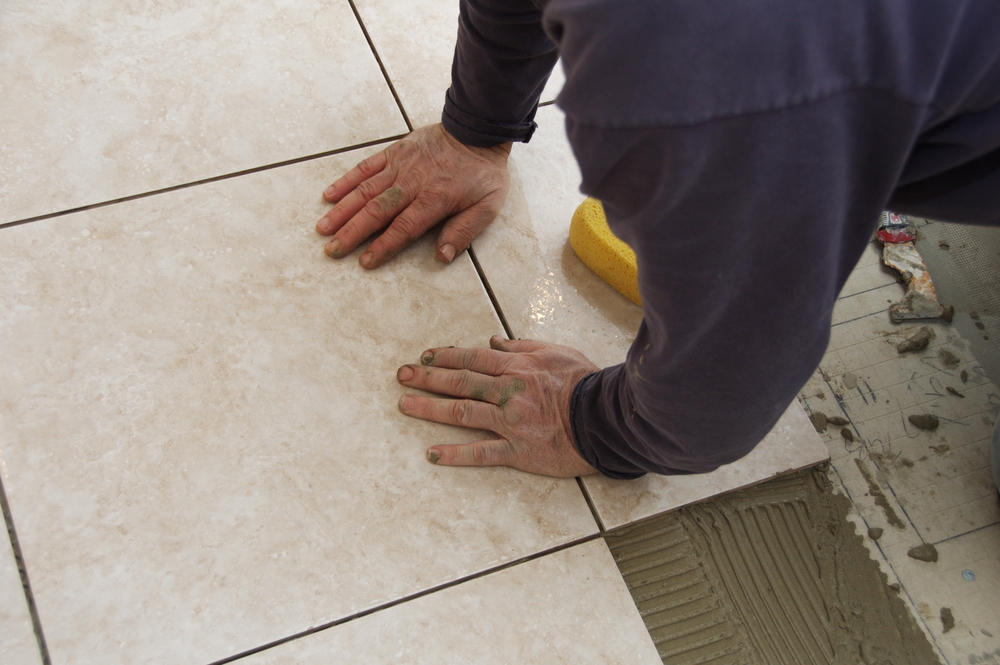
To determine if your ceramic tile needs to be sealed, you will need to determine how absorbent the tile is. Most ceramic tile is nonabsorbent and will not need to be sealed. As with any rule there are however a few exceptions, that do need to be sealed. As technology improves more examples of ceramic and porcelain designed to look like marble are coming to market. The issue, is that many are confusing marble with being a ceramic. Marble and Mexican tile are very porous and needs to be sealed. Depending on how porous your floor is, and correspondingly how fast it absorbs a liquid can be communicated by its absorption co-efficient. However, few of us maintain or are aware of this when we buy our homes or install our tile floors, making it a virtually useful but rarely available piece of information. As such we need a different path to making that assessment.
The crazy thing, is that more often than not its not the tile, but the grout that is getting dirty. Regardless whether the tile is non-absorbent the grout most certainly IS absorbent (unless an epoxy was used). Often it is a question of sealing your grout more so than your tile.
How big a deal is this anyway? Its not a big deal to seal your tile, but it is a huge deal to correct should it become stained. Here is your trade-off. A typical small counter will take a few minutes to seal – wiping on, allowing to stand a few minutes –and the wiping the excess unabsorbed sealer off. However, once stained, you are looking at setting up a poultice soaked in an aggressive chemical designed to break down the staining material, then waiting 24 hours as it is pulled from the stone into your poultice. Then removing this powder mess, and hoping to improve the situation. If not trying a different chemical. If so repeating as many as 6 times in order to get the stain out, and finally, re-sealing. In each 24 hour cycle you are dealing with the oder of the chemical being used, and are not likely to want to use your kitchen or the affected area.
Sealing is like insurance. You hate to pay for it, but wish you had when you need.
The following should help you decide if you need a sealer:
1. Tile Absorption Test
To get an idea of how absorbent the ceramic is place several drops of water on the tile and wait 10 minutes. See whether the water drops disappear. Typically, if absorbed into the tile, one will see a darken “wet” area remaining, much like a rain drop on a dry concrete sidewalk. The longer it takes for the water drops to disappear the less porous the tile is. The most important issue is not how long, but whether it darkened the tile. If yes, you need to seal.
2. Location – What type of protection do you need?
Is your ceramic tile located in the bathroom, kitchen, foyer, lobby, hallway, etc..? Believe it or not this does make a difference. What kind of traffic will the area of the ceramic tile get? This can determine the most likely type of dirt or spill one and paws. Do you have pets? If yes than a greater likelihood that body oils, and urine need to be accounted for. Basically, you want to know whether it be exposed to water, oil, a lot of dirt? Location is important. A kitchen floor would need to have an oil repellent sealer. However, an area such as a foyer or hallway in your home will typically only see water related exposure or spills and therefore need a water repellent sealer as it will be exposed to occasional wet shoes or paws. This should not be confused with a solvent borne or waterborne sealer, this simply refers to how the sealing chemistry is being delivered. But, as you might ascertain most oil repellent sealers are solvent borne. Many states are limiting the use of solvent borne chemicals, however have made allowances to allow quart size quantities, this is one of the reasons. While we would love to recommend a waterborne, we find that the solvent borne sealers still prove easier to apply, and provide superior performance. Hopefully, as technology advances that will one day change, we know many companies they are working diligently to this end.
3. Maintenance
If maintenance is neglected, the ceramic floor will suffer and gather dirt and grit. Sealers do not last forever. Just like the batteries in your smoke detector. Sealers need to be periodically re-applied. We recommend every two-years in high traffic areas such as foyers and kitchen working surfaces. We recommend this be part of your April 1 spring cleaning routine when you check your smoke detector batteries and other home periodic checklist items.
If the ceramic floor is mopped daily, it could be exposed to harsh cleaners. Many tile cleaners are acidic. Acids will breakdown the silicone chemistry overtime, removing your floor’s protection. As silicone chemistry is the bost employed, for good reason, this represents another reason to re-seal periodically. The life of your seal can be extended by using a non-acidic cleaner. Have no fear, you are not sacrificing performance. In fact, it is just the opposite. Acid cleaners were first generation chemistry (The Romans used vinegar). Today, emulsion and surfactant chemistry makes removing oily deposits a snap (Recall those dishwasher commercials moving grease out of your way). MARBLELIFE Intercare was engineered for just this purpose, and is used daily by our more than 100 craftsman around the country as the easiest, fastest and safest way to a clean floor without damaging the floor’s seal. If the seal is damaged by harsh cleaners we are once again allowing the floor or counter to absorb spills, or dirty water (during the mop process). This will result in a dirty looking floor, even though you have routinely “cleaned” it. Frustrating we know, but in the end its just science.
A busy hotel lobby floor will be damp mopped every day home foyer that does not get as much traffic may not need daily damp mopping It is more important to clean with the correct cleaner, than the frequency be right. (You will note that we make a point of stating one should DAMP mop versus WET mop. This is an important distinction as we are seeking to lift the dirt and oil off the floor, versus move it around with the wet approach. This is a subject for another article, or call and we can explain further).
OK, so now we know we need to periodically seal our floors, the next question is how to select the correct sealer. There are many sealers on the market today. The two basic categories of sealers are topical (coatings) and penetrating sealers.
Unless you are seeking to modify the surface gloss or appearance, you typically want a penetrating sealer which seals without modifying appearance. Penetrating sealers have the purpose of penetrating below the surface and deposit solid particles into the pores of the ceramic tile which prevents oil, water and dirt from building up .Penetrating sealers or impregnators should only be used on a surface that is porous (don’t forget your grout).
If you have been struggling to get a floor clean, the issue maybe the fact that your floor is no longer sealed, in which case you are not struggling to get the dirt off the surface, but out of the tile and grout. That is much more difficult, and typically will require a power washing at a minimum followed by an effective seal or colorseal (grout applied only).Hopefully, we have been able to give you an appreciation for the importance of sealing a surface. This is something that can be done yourself, or if you are feeling nervous look to a trained craftsman such as MARBLELIFE.
Call MARBLELIFE at (888) 524-3372 or visit us online to secure your FREE ESTIMATE at www.MARBLELIFE.com or to www.MARBLELIFEPRODUCTS.com to secure the care products appropriate to your surface, and your desire for an easy effective cleaning solution.


